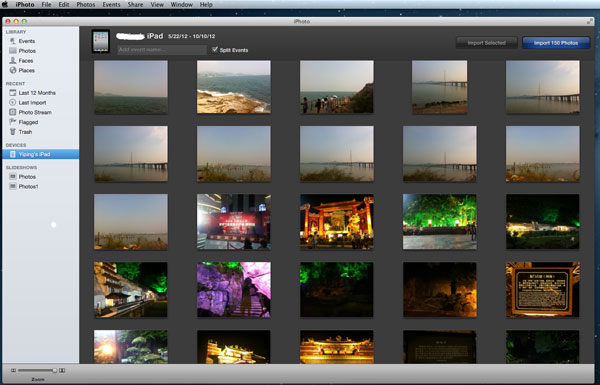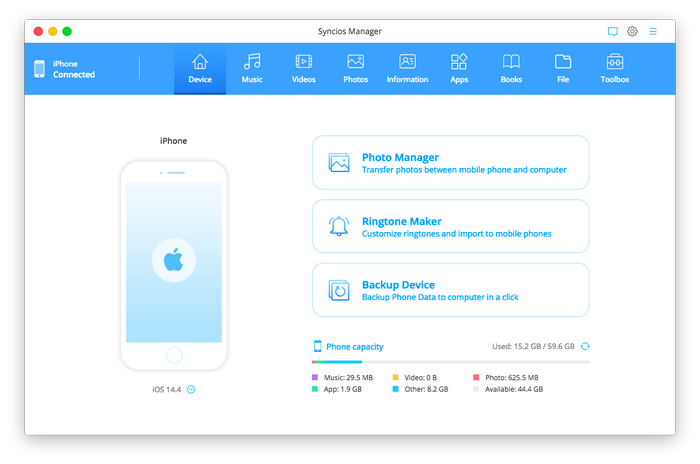If you want to submit an iOS application to the App Store, you must build your application with a special platform configuration first, which is specific to the App Store.
Ios To Mac App Download
Prerequisites
Before you can build a version of your iOS application that you can upload to the App Store, you must:
- Prepare your application for deployment.
- Provision your application for the Application Store platform configuration.
Since iOS 11.2 lyrics in music.app are no longer shown. This has not been fixed in 11.2.5. Besides that, the iOS AppStore review sytem is severely broken since iOS 11. Wrong dates are shown for updated apps, review can not(!) be sorted after date or usefulness. This makes the review system unusable. All of Monday morning’s best Mac and iOS app deals are now up for the taking. Today’s collection includes classic RPGs gone mobile, a 3D atlas for Mac, sleeping and photography apps, puzzlers, and much more. Specifically speaking, you’re looking at notable deals on titles like Kotoro, The Great. Apple will help iOS developers repurpose their apps for MacOS with an updated UIKit that makes it easier to adapt to Mac features not present on iOS apps. These include scroll bars, mouse input. Mac App Store is the simplest way to find and download apps for your Mac. To download apps from the Mac App Store, you need a Mac with OS X 10.6.6 or later.
Supporting 32-bit iOS Devices
The App Store only accepts application archive files that support 64-bit iOS devices. If you want to support 32-bit iOS devices as well, you must build a single application archive file that supports both 32-bit and 64-bit iOS devices.

Download Latest Ios For Mac
To build a single application archive file that supports both 32-bit and 64-bit iOS devices:
To manage Apple Card Monthly Installments, you need an iPhone with iOS 13.2 or later or an iPad with iPadOS 13.2 or later. Update to the latest version of iOS or iPadOS by going to Settings General Software Update. Tap Download and Install. Available for qualifying applicants in the United States. Any Mac-iOS merger would probably be many years from now, so regardless, if the Bloomberg report is true, Apple will be pushing the iOS and macOS app worlds closer together much sooner.
LonelyScreen is another mirroring tool that lets users turn their Mac/PC into an AirPlay receiver. It allows users to cast their iOS devices to a bigger screen as long as it which is connected to a Windows or OSX computer. Pros: Allows users to record mirroring sessions to create tutorial and reviews, or gameplay videos. Works with both Mac and PC.
- Select Project > Options to open the Project Options dialog.
- On the Target field, select a 64-bit iOS device configuration, such as iOS Device - 64 bit - All configurations.
- Enable the Generate iOS universal binary file (armv7 + arm64) option. You can find this option in:
- Delphi Compiler > Compiling > Other options (Delphi)
- C++ Compiler > Advanced > Other options (C++)
- When you generate your application archive file, select iOS Device - 64 bit as target platform.
If you only want to support 64-bit iOS devices, no additional configuration steps are required. When you generate your application archive file, select iOS Device - 64 bit as target platform.
Generate an Application Archive File for Your Application

To generate an application archive file for your application, do the following:
- Run the Platform Assistant on the Mac.
- Build your project on RAD Studio.
- On RAD Studio, on the Project Manager:
- Expand the Build Configurations node and double-click the Release configuration, or any other build configuration that you want to use to build your signed application package.
- Expand the Target Platforms node and double-click the iOS Device - 64 bit target platform to select that platform. The selected target platform is displayed using a bold font.
- Expand the iOS Device - 64 bit node, expand the Configuration node within, and double-click the Application Store platform configuration node to select that platform configuration. The selected platform configuration is displayed using a bold font.
- Select Project > Deployment, and click the Deploy button to deploy your application.
RAD Studio builds your application using the SDK that you previously added to the IDE, connects to your Mac using the connection profile that you configured for the iOS Device - 64 bit platform, and the Platform Assistant running on the Mac prepares your application for submission to the App Store.
- Note: The first time that you use a user account on your Mac to build an iOS device application, your Mac prompts you to allow RAD Studio to sign applications using your private key. You must accept this on your Mac so that RAD Studio can deploy your application.
Your application, generated on the Mac, is then copied over to your development system. You can find your final application file (.ipa) in the folder of your project, that is: <project folder>iOSDevice64<build configuration><project name>.ipa.

For example: C:Users<user>DocumentsEmbarcaderoStudioProjectsMyProjectiOSDevice64ReleaseMyProject.ipa.
Running the Application
You cannot run the applicaton directly from RAD Studio into an iOS device when the Application Store configuration node is selected.
When you select Run > Run or Run Without Debugging, RAD Studio builds the project and deploys the application. Instead of running the application on the target device, an (.ipa) file is created. A message appears informing about the file name and location.